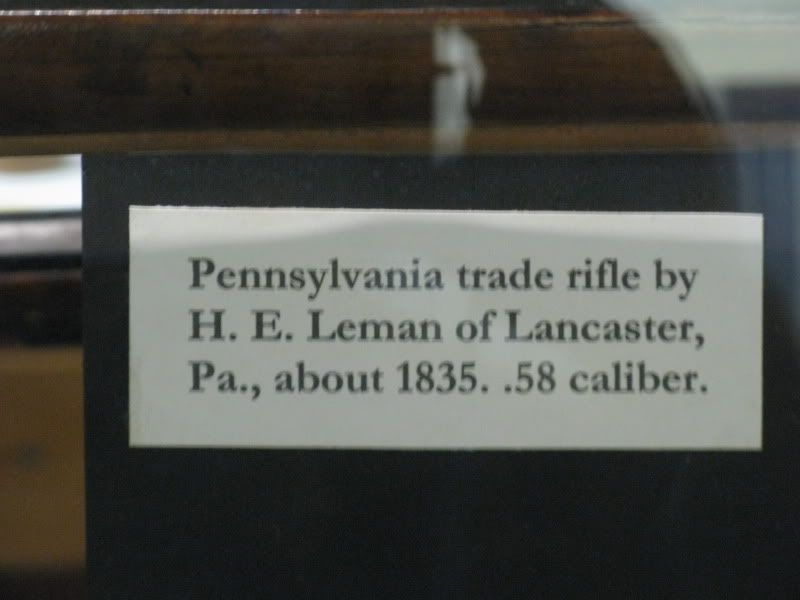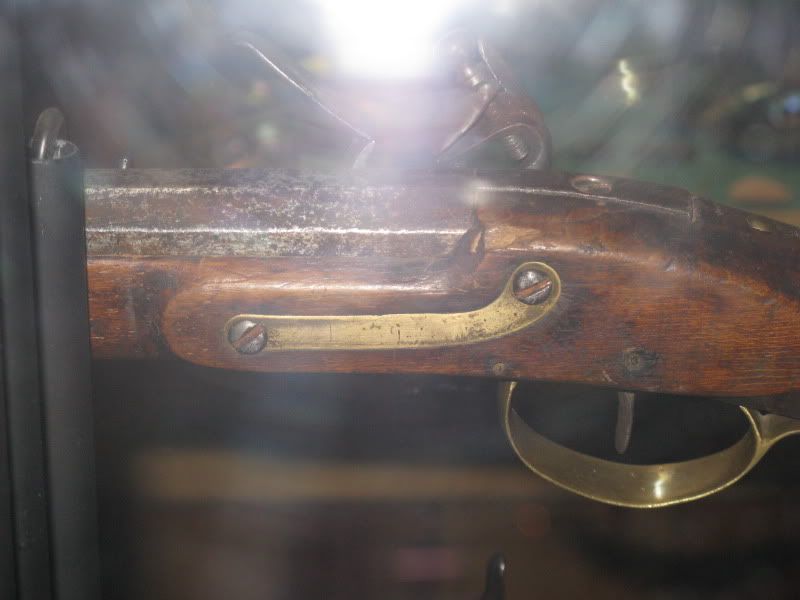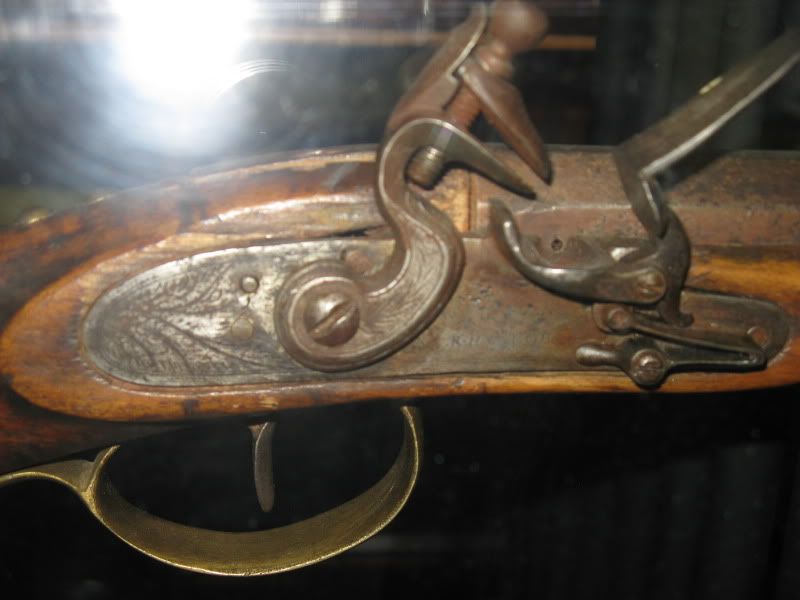whitedog333
40 Cal.
- Joined
- Jun 22, 2007
- Messages
- 124
- Reaction score
- 0
When my wife and I went to The Museum Of The Fur Trade in Chadron, Nebraska a while back, I found and photographed a Leman trade flintlock that was in a display case along with several rifles of other makers. Interestingly, I found several features on the Leman rifle within the display case that matched mine, but most important, the rather unusual sideplates of both rifles matched perfectly. A very good indication that my rifle just wasn't built with a Henry Leman barrel, but was in all likelyhood, like the early Leman rifle in the museum, made by Henry Leman himself as one of his very first rifles in 1834 or 1835. Anyway, here are the pictures of my rifle and the museum rifle to compare. Both rifles have the same square end on their breech plug tangs. The museum rifle has domed heads on its lock plate mounting screws while mine has flat. The museum rifle has a rounder contour of the wood at the back of it's lock and sideplate mortise while mine has more pointed or tapered. My rifle has no ramrod entry thimble while the museum rifle does. My rifle is 40 caliber while the museum rifle is larger. Both buttplates have the identical contours to the heel tang. A common enough design, but just mentioning it here. The shape of the butt in profile of both rifle's is identical with their gently concave contour from the trigger guards to their toe plates. Both rifles have artificial striping though mine is allmost gone now.

the right side of my early Leman long rifle

The Leman in the museum.

My Leman rifle. Notice the shape of the side plate.

The left side of the Museum Leman showing the identical shaped sideplate

Lock of Museum Leman

A fat old man and his early Leman flintlock longrifle.



the right side of my early Leman long rifle

The Leman in the museum.

My Leman rifle. Notice the shape of the side plate.

The left side of the Museum Leman showing the identical shaped sideplate

Lock of Museum Leman

A fat old man and his early Leman flintlock longrifle.








